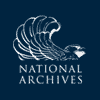Francisco Rendon to George Washington, 24 April 1781
From Francisco Rendon
Philadelphia April 24th 1781.
Sir
Yesterday afternoon Anchored in this River two American Schooners from the Havana, from whence they Sailed on the 12th Inst. by which I have received Letters from the Governor & Captn General of Said Place under date of the 10th giving me a Detail of the following Intelligences:1 That on the 4th January Ultimo, my Masters Arms had re taken the Fort Called San Juan de Nicaragua on the Spanish Main in the Kingdom of Santa feé, having made Prisoners three Officers two Doctors & a Soldier, the whole of the Garrision Consisting of two hundred Men, escaped in Boats the preceeding night of its reduction.2
His Excellency also acquaints me, that the very day of the date of his Letter, he Conjectured that the Town & Garrison of Pansacola could likewise be taken, because on the 18th Ulto General Galvez, with a Brigantine, two Artillery Boats & a Galley, forced the entrance of the Port, & the following day the whole Convoy which went from the Havana entered & came to an Anchor in the Bay; on the 23rd another Expedition from New Orleans to Join the former one also arrived; & that on the 26th the Naval forces as well as those by Land from the Havana & Movila3 were in the Harbour and at the Camp close to the Town beginning the Attack.
Having Seen from Cape San Antonio of the Said Island of Cuba4 an English Fleet of Eight Ships of the Line, that from Jamayca (as it was thought) were going to the Succour of Pensacola, the two Fleets Spanish and French Composed of Nineteen Ships of the Line Sett Sail Immediatedly with the View of Intercepting them to frustrate their Operations; It’s Certain that if Such Lucky hit cou’d be acquired it wou’d be a very Capital Stroke to the Enemy, which is not unprovable may happen: The Spanish M. of W. had on board a number of Troops under the Command of Don Juan Manuel de Caxigal to Land in Case a Succour Shou’d be wanted besides those which were already there under the orders of General Galvez; I expect Soon the arrival of other Vessels with the Confirmation of the Success, when I shall do myself the honor to acquaint Your Exellency with.5 I respectfully remain. Sir Your Excellency’s most Obedt and most Humble Servt
Francisco Rendon
LS, DLC:GW. GW replied to Rendon on 2 May; see also GW to Rochambeau, 30 April (first letter).
The Pennsylvania Evening Post (Philadelphia) for 24 April printed similar intelligence under the heading Phildelphia, same date: “The last vessels from the Havanna inform, that on the fourth of Jan. the important fort of Don Juan Nicaragua, on the Spanish main, was retaken by his Spanish Majesty’s forces; part of the garrison were taken, and the rest escaped in boats the preceding night.—On the 18th ult. gen. Galvez forced the post on Rose’s island, at the entrance of Pensacola bay; the 19th he entered the harbour, with the convoy from the Havanna; the 23d another convoy arrived from New Orleans, and on the 26th both divisions and the army, with another body of troops from Mobile, commanded by col. don Joseph Expeleta, were joined at Pensacola camp, preparing to begin the attack of that place.—A fleet of eight sail of British ships of the line having been, as was said, despatched to the succour of Pensacola, the Spanish fleet, under adm. Solano, having a body of troops on board, and some French ships under M. Montieull, making together eighteen ships of the line, were immediately ordered to sea with a design to intercept the enemy.” The same intelligence appeared in The Pennsylvania Packet or, the General Advertiser (Philadelphia) for 24 April.
1. The letters from Don Juan Manuel de Cagigal, captain general and governor of Cuba, have not been identified. The schooners carrying these letters had left Havana on 12 April.
2. A British expedition had captured the Fortress of the Immaculate Conception in Nicaragua on 29 April 1780. In November of that year, the British commander had ordered the fort demolished and the surviving garrison evacuated. For a source that refers to the fort as Fort San Juan, see , 802.
3. Rendon means Mobile.
4. Cape San Antonio is on the western end of Cuba.
5. For the Spanish expedition sent against the British outpost at Pensacola, Fla., which fell on 9 May 1781, see , 233–34, and , 853–54; see also , 242–56. Rendon reported Pensacola’s capture when he wrote GW on 12 June (DLC:GW).

![University of Virginia Press [link will open in a new window] University of Virginia Press](/lib/media/rotunda-white-on-blue.png)
